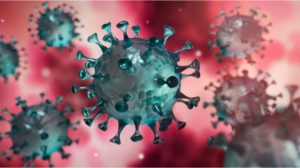COVID-19 — The Good, the Bad and the Ugly
By Emily Folk
 The coronavirus pandemic has disrupted almost every country in the world. Social distancing and protective health equipment are now part of our everyday lives.
The coronavirus pandemic has disrupted almost every country in the world. Social distancing and protective health equipment are now part of our everyday lives.
When it comes to the natural environment, however, scientists are pointing out the different perspectives and how COVID-19 has had widespread effects. From decreasing emissions to unexpected human impacts, the pandemic shows the good, the bad and the ugly sides of a global pandemic.
Decreasing Pollution
Many organizations have reported that emissions are decreasing due to the pandemic. Quarantines and social distancing are keeping people at home across the world. In terms of good news, limited travel and remote work have led to a decrease in carbon and nitrogen dioxide (NO2) emissions.
China, for instance, saw NO2 emission reductions of 10% to 30% within the past few months. Similarly, in parts of Canda, NO2 levels dropped by close to 40% during the pandemic.
These kinds of drastic declines are beneficial for the environment. However, here’s the bad news — these changes will need to continue even after the pandemic ends. Climate change requires sweeping and rapid transformations that reverse emissions globally.
Social distancing will eventually start to ease, and the pandemic will eventually pass. When it does, travel and factory production will resume. Ground and air travel are some of the most carbon-heavy polluters. Factories also release NO2 emissions — hence the declines in China and Canada. For a more sustained and global shift, fossil fuels and sustainable energy will need some changes. As of now, progress is not happening quickly enough.
Economic Threats
Renewable, sustainable energy was on the rise before the pandemic came. Like other energy sources, it has taken a hit due to volatile stock markets and a lack of investments. Luckily, there is hope that renewables will rebound eventually — as early as next year.
In more bad news, however, they still need to compete with fossil fuels. In the past few months, coal investments have plummeted, potentially beyond the point of no return. Fossil fuels, too, like oil and natural gas, encountered some obstacles. Now, though, natural gas is likely to increase in demand.
There are two paths ahead. The first involves relying on fossil fuels — as most countries usually do — during the reopening stages. High demand and fast action could keep the industries running and continuing to pollute.
Now for the ugly — with a slower recovery, the fossil fuel industry could see a multi-trillion-dollar collapse in the future. In this scenario, fossil fuel doesn’t receive the supply and demand it needs to recover, and renewable energy doesn’t take its place. With the United States officially in a recession and unemployment increasing, a lackluster recovery could be economically catastrophic.
Human Impact
Replacing fossil fuels with renewable energies and better technologies is a must. Smart technology can do a lot to help during the pandemic — like facilitate better social distancing across countries. It can also shed light on the negative human impacts on the environment and the pandemic.
Here, the ugliness continues. Humans facilitate pollution — pollution from travel and factories should be decreasing rapidly by now. Renewables are on the rise, but not enough. During the pandemic, increased pollution could be the difference between life and death.
According to the World Health Organization (WHO), air pollution causes up to seven million premature deaths every year — independent from the pandemic.
With COVID-19, however, a Harvard study recently linked more pollution with higher coronavirus death rates. Since the virus affects the lungs, as does pollution, the environment is not the only victim of the pandemic’s effects.
Human tragedy outweighs the pandemic’s temporary environmental benefits, which is the unfortunate, ugly truth. Pollution makes people vulnerable. Those who are already at risk, like older adults in nursing homes, cannot afford to have emissions raising their risk levels.
On top of these risks, government policies and stay-at-home orders are keeping loved ones from seeing each other during this tragic time. Ultimately, no matter the environmental benefits, human loss takes precedence.
It gets uglier, still. Some researchers have pointed out that deforestation worsens the spread of infectious diseases, like the coronavirus. As developers cut down large plots of land, wild animals move toward human-populated areas, therefore increasing the chances of spreading diseases they carry to populations, cities and countries.
Following the Patterns
Though there are positive outcomes for the environment, the coronavirus pandemic is doing more harm than good. The paths ahead show that, if humans don’t act in the interest of the environment and humanity, things could continue getting worse. Curbing the effects of COVID-19 and adopting renewable energy are not mutually exclusive — saving lives is the common denominator. The pandemic has therefore exposed the connections between human impacts, the virus and the environment.
Bio:
Emily Folk is a conservation and sustainability writer and the editor of Conservation Folks.



